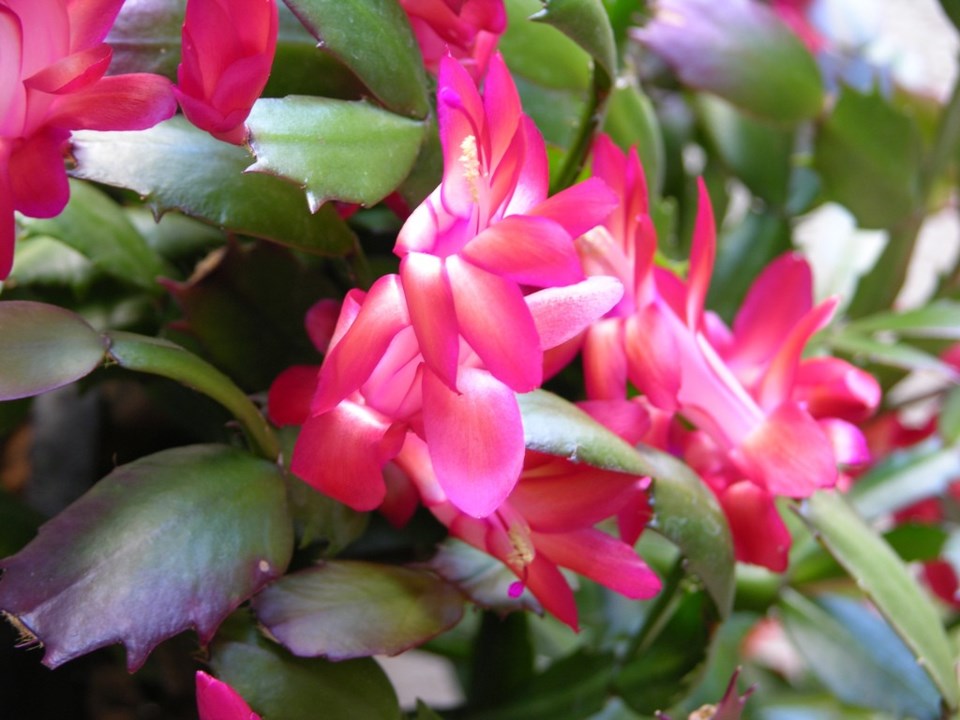Have you ever wondered why your Christmas cactus always blooms too early, too late or not at all for the Christmas season? The simple answer is that you probably don’t have a true Christmas cactus.
The most popular cactus in our part of the world is a ‘Schlumbergera truncata’ (or Zygocactus truncatus). This variety is often called a ‘crab cactus’ because of its flat, sharp-toothed leaves. Large, long-tubed petals can appear anytime from November to March and in many cases, it will bloom twice during this period. Its colour range used to include only pink, white orange and salmon but extensive hybridization has led to the development of fluorescent pink, scarlet, bright lavender and even yellow.
Zygocactus are easy to grow and require minimal care. The most important fact to remember is that this cactus comes from the rainforest, so for its ultimate performance in your home, you must treat it like a rainforest plant. Unlike traditional cacti, ‘Zygos’ love humidity. They also need very well-drained soil, otherwise their roots will quickly rot. To produce a November blooming crop, commercial growers take their cuttings in March or April when the daylight hours begin to lengthen. Usually three cuttings are rooted in a small cell pack using either sand or a perlite and sand mix. They root rather easily. All three cuttings are then planted in four-inch pots with very well-drained soil and placed in a warm, humid environment to encourage fast growth. You can easily replicate this process at home.
By the end of September, the plants are usually developed well enough to be saleable but they must first be brought into bud and bloom. The trick here is to give them short hours of daylight (very much like poinsettias) and cooler temperatures. Growers can space out the blooming periods simply by controlling both the amount of daylight and the temperature. By making sure the plants have natural hours of darkness starting in mid-September and by maintaining night temperatures of 55°F (12.5°C) one crop can be brought into flower in late October. The blooming of the second crop can be delayed until November or early December by keeping the temperatures higher and by adding night-time lighting. To get this second crop to flower, it too must be cooled and given less daylight hours prior to the desired blooming time.
It’s important to know these details because many folks who have ‘Zygos’ can’t get them to bloom. This is usually because their plants are kept year-round in a very warm room and their house lights are left on late at night. To have success, these conditions must be adjusted.
The other common problem with these plants is blossom drop. It is important to remember that these cacti need not only well-drained soil but also a humid environment for the blossoms to fully develop. Don’t be afraid to mist them daily with warm water and it really helps to place them on a saucer with gravel and water underneath. As for watering, give them a good drink of warm water, then let them dry out between waterings. Never keep the soil too wet or too dry.
If it is the real Christmas cactus you are after, they can be hard to find. The correct name for this variety is ‘Schlumbergera bridgesii’. They only come in a rosy-red colour and their leaves are smooth and spineless, unlike the Zygocactus. They need the same care as Zygocactus and they usually bloom bang on for Christmas



